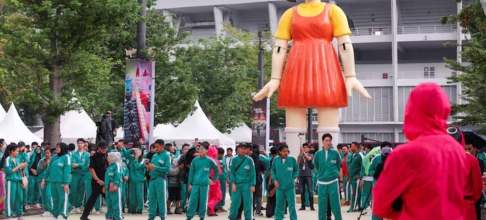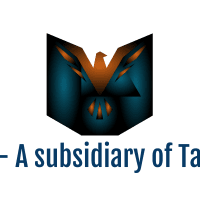10 Seismic Interpreter
Surprising Ways of Predicting Volcanic Activity
If you love volcanoes, then you might erupt with excitement over this position. A seismic interpreter monitors and gathers data from volcanoes and earthquakes that are a result of volcanic activity. They use several scientific modeling techniques to produce geophysical and geological data to analyze the subsurface structure of the earth. They are also responsible for identifying resources, how to extract the resources, and evaluating the potential risks associated with extracting these resources.Seismic interpreters work closely alongside geologists and geophysicists to develop and produce strategies to reduce these risks. Surveying volcanoes may not be a popular job, but it is definitely real and very important.[1]
9 Planetary Protection Officer
Protect Earth from ALIENS! NASA hiring “Planetary Protection Officer” Paying $187,000!
Who is in charge of protecting our planet from an alien invasion? Well, that would be up to a planetary protection officer, which is a legit job at the National Aeronautics and Space Administration (NASA). This person is responsible for the protection of celestial bodies, and they keep their own spacecraft and astronauts from contaminating other bodies with life that doesn’t belong there. NASA understands that keeping our Earth clean is a top priority, but it also believes in keeping other celestial objects that the agency visits clean.A planetary protection officer will assist in the development of sterile spacecraft, flight plans that protect planetary bodies, and plans to protect Earth from extraterrestrial samples. Ultimately, they work to protect the science, explored environments, and Earth. The job title may sound like something out of a sci-fi movie or book, but it’s an important job that pays in the six figures.[2]
8 Antarctic IT Expert
What is it like to live and work in Antarctica?
Could you imagine working in one of the most remote regions in the world? That is what several people do daily while working for the United States Antarctic Program in Antarctica. One of the most important jobs in the program is that of the information technology expert, who is responsible for managing the internet connectivity for the program at three research stations.Scientists who work in the Antarctic Program need the internet to submit their research and data to universities for analysis. Sometimes, the data needs to be looked at quickly, making an internet connection crucial for the scientists working in the program. The IT expert connects to the internet by searching for polar-orbiting satellites that allow them to connect to the internet for around four to six hours daily.[3]
7 Senior Advisor for Making
Maker Movement: It’s about creating rather than consuming – The Feed
Stephanie Santoso served as the first Senior Advisor for Making at the White House Office of Science and Technology Policy from 2014 to 2016. Santoso worked closely with federal agencies, colleges, schools, museums, libraries, and other organizations to help broaden access to the Maker Movement. She was in charge of figuring out how design and technology could help solve real-world problems.Santoso would work in several fields, from sewing to 3-D printing, to create educational and business opportunities. While at the White House, she helped develop an interactive teddy bear that helped kids with diabetes take care of themselves. She has also designed clothing with built-in sensors that collect biometric data and makes hand-made toys for her son.[4]
6 Chief Calligrapher
Former White House Calligrapher Rick Paulus
The chief calligrapher at the White House is responsible for designing and executing all official documents at the White House. Their office is located in the East Wing in the Graphics and Calligraphy Office. This position is responsible for all official invitations, official greetings, service awards, place cards, and proclamations. The position of chief calligrapher pays more than $100,000 per year.Calligraphers have worked in the White House since the early 1800s, and almost 50% of their work is completed by hand. The job may sound like a breeze, but calligraphers can create hundreds of place cards per day depending on the occasion and time of year. While there is a chief calligrapher at the White House, there is usually at least one or two other calligraphers on staff at all times.[5]
5 Fire Lookout
Life as the Last Fire Lookout
Many government jobs would require the employee to be around large groups of people each day, but there is one government job that is the complete opposite. A fire lookout position requires officers to hunker down in remote watchtowers and keep a lookout for forest fire outbreaks. These officers play a crucial role in protecting forests and preventing wildfires from spreading.Some of the responsibilities of a fire lookout include tracking weather patterns, reporting any signs of smoke, maintaining equipment, recording observations, and performing routine maintenance. Since fire lookouts may have to work long hours in isolation and without any communication, there should be plenty of time to reflect on life, meditate, or read your favorite book.[6]
4 Supervisor of Motion Picture Preservation Lab
Out of the Dark: Bringing Films to Light at the National Archives
The supervisor of the Motion Picture Preservation Lab helps oversee one of the largest collections of movies in the country. The collection consists of films created by the U.S. government. Many of the films are military instruction videos, but the Academy Award-winning documentary The True Glory is also a part of the massive collection.The supervisor, along with their team, preserves these films by using a high-resolution scanner and special editing software. They fix and repair any tears in the film before feeding it into the scanner. Then, they adjust the film’s color and scratches with editing software. The process can take several hours to repair each film, but doing whatever it takes to preserve the film is the ultimate goal.[7]
3 Puppy Webcam Guru
The Denali National Park in Alaska is home to North America’s tallest peak, Denali. The popular park and preserve are also filled with wildlife such as moose, grizzly bears, sheep, wolves, caribou, deer, and so much more. Visitors can explore numerous hiking and biking trails, experience glacial rivers and massive peaks, or take a bus tour of the National Park. While there are several park rangers and other positions located in the park, one lucky person has a unique job at Denali that people can enjoy from the comforts of their own homes.Denali’s Puppycam gives viewers from across the world a chance to peek inside the park’s sled dog puppy kennel, and someone must oversee the webcam. The webcam receives over 100,000 views per year, which is more than half of the National Park’s web traffic. As the sled dogs grow older, they will help bring researchers to remote areas of the park. Who wouldn’t love being in control of the camera that watches adorable puppies all day?[8]
2 Geodesist
What is Geodesy-Explained
A geodesist measures and monitors the Earth’s size and shape to help determine the exact coordinates of any point on the planet. A high degree of accuracy is accomplished by geodesists by using modern and ancient technology. They use atomic clocks and lasers to measure the pull of gravity, and they measure the distance between two points on Earth with tools that monitor noise from outside of our galaxy.A geodesist can also track the rise of the mean ocean surface by bouncing signals from satellites. They can even determine the positions of points almost precisely in just minutes by using signals generated by GPS satellites high above the Earth.[9]
1 Coin Artist
One of the coolest jobs in the private sector is located at the United States Mint. The U.S. Mint employs coin artists to help design coins and medals that illustrate the story of America. The quarters, dimes, nickels, and pennies found in your pockets and purses were designed by a team of medallic artists. There is currently one chief engraver and five medallic artists on staff based at the Philadelphia facility, and they are all professional sculptor-engravers with years of experience.
The United States Mint says the designs on their coins and medals “express the values, aspirations, and shared heritage of our nation.” The team of coin artists creates and submits their own designs to be considered for production, and they also create sculptured models of the coins and medals once they have been approved. The U.S. Mint does occasionally work with outside artists for special designs, but most of the coins and medals are created by the small team of coin artists.[10]
fact checked by Darci Heikkinen













